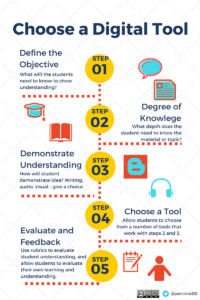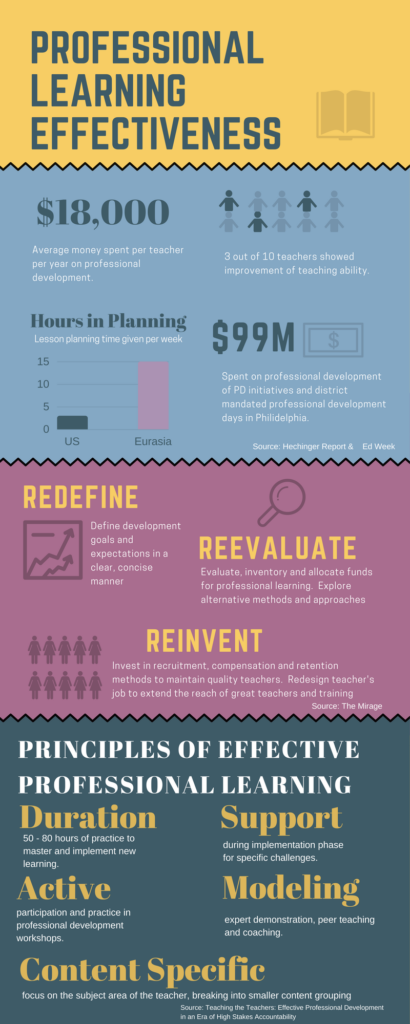Digital Learning and Leading Journey
Change, transformation, innovation are all task that requires effort and tenacity. Many times this transformation occurs when you don’t think that a transformation needs to or can occur. Where the change happens in such gradual instances, that only by looking back at the journey can one see the transformation. That is my best way to describe my experience in the Digital Learning and Leading Masters of Education program at Lamar University. During this program, I was able to experience what it meant to be a part of a significant learning environment by being given a choice and a voice on the assignments and displays of learning. If I had to sum up the experience in three words it would beMetacognition drives transformation.I came into the program hoping to learn how to be a better instructor of educational technology tools and integration of technology into the curriculum. The program was built a series of steps. Learning goals and outcomes that drove the work and progress of my learning. Dr. Harapnuik developed this visual to demonstrate the learning program at Lamar.

I have always enjoyed experimenting and including digital and other educational technology tools in my classroom. Normally settling to the left of the adoption curve, my students saw what it means to learn. Showing how it was okay to struggle and sometimes fail, for development in an eventual positive direction. Although I am an early-adopter, I still had and have a lot to learn. The courses of 5302 and 5303 encouraged me to learn more. In it, I had to time to develop an ePortfolio, presentations, and videos as I dove into educational technology tools and techniques. These were just the initial steps of my journey as a digital learner and leader. Some of my first assignments challenged to determine where I was as a digital learner and display this knowledge.
One of the goals of the Digital Learning and Leading program is the develop leaders of organizational change. This is encouraged by the student’s choice of an innovation plan. One that the student will continue to look back at, develop, and extend throughout the learning process. Courses of 5304, 5305 and 5313 were where I struggled to find my role as a leader. It was the time to develop an innovation plan that encouraged that development. My innovation plan centered around the effective and efficient use of iPads in the classroom. This was chosen, as I am an instructional specialist in technology at Elgin High School. The district is 1:1 iPad for grades 6-12. A classroom that is filled with iPads, has the potential to be a personalized learning hub. Where students are able to pursue learning in their own desired ways. Making the learning authentic and relevant to them. Unfortunately, I saw there was a need for drastic support for this to occur. From this recognition, I developed an initial innovation plan. A plan to encourage teachers to utilize iPads to their fullest extent. This plan has changed throughout my coursework, and I am still in the process of working the plan in my job. It is a long journey, but I hope to inspire a change in the forms of learning at Elgin ISD.
iPad Opportunities Execution Presentation
New Culture of Learning
Inspirations
The assignments in the Digital Learning and Leading program follow the COVA model. This model has taken shape in the cohorts that have gone through the Lamar program. Dr. Harapnuik, Dr. Thibodeaux, and Dr. Cummings have developed a model that encouraged student’s choice, voice, and ownership in an authentic learning environment. Dr. Harapnuik writes about why the COVA model is significant in student learning as it is “fundamental to learning” (n.d.). Developing an innovation plan that was essential to my job, and one that I could develop based on research and readings encouraged me to delve deeper into making it more relevant to me. It was as if the further I developed an authentic plan, the more I felt like I owned the plan. The more I felt I owned the plan, the more I wanted to make it authentic. My biggest struggle, and still is my biggest struggle, is discussing and enacting this plan. There are many initiatives and pushes going through the district. As I have developed a sense of ownership, it is still my goal to push the plan through to improve the education of the students.
The bulk of the program came in the last few courses. Looking at digital citizenship, action research and online curriculum development were all areas that I knew of but had not focused much on. Starting with a determination of learning style, I had to focus not just on the digital tools but their relationship to pedagogy and practicality in the classroom. The coursework is focused on a constructivist approach. I took that approach but added the necessity of cognition as well. As I determined, it is not just the learning experiences that increase learning, but also the reflection of those experiences that form a strong foundation for the learning. As Sal Khan speaks about in his “Let’s Teach for Mastery” TED talk, students should master concepts before continuing (2015). I add one more step to that, there should be reflection time as well as mastery. This allows the glue, mortar, and cement to set before the next layer is added to the house.
This idea of metacognitive reflection was prominent in the entire coursework. As I worked on online course development, it was the reflection pieces in my eportfolios that I learned the most. Having time to look at my success and failures. Looking at doing research, that was relevant and relatable to my career, it was the reflection of the results that were important. Even in digital citizenship, it was looking behind the rationale of what it meant to be a good digital citizen where I felt most of the learning occurred. Having a forward, public-facing eportfolio gave me an audience to share this learning.
Revive Learning with Technology
Stages of Action Research
Digital Leader and Forever Digital Learner
This is my last coursework blog post. This blog post is the summit of all the metacognition of the entire program. I plan to continue to press for change within education. To create a more significant learning environment through student choice, voice, and authentic learning environment. This does not just go for students, but teachers as well. Yesterday was EdCamp Austin. Edcamps are the outcome of teachers that wanted more authenticity in their learning. I see edcamps as what the COVA model stands for. Where teachers determine what they want to learn about, sharing what they know, are given time to work together toward an authentic goal, and if the topic in that room does not serve the teacher they are encouraged to find a better room. This was all summarized in the last session I went to. Vaguely titled “Professional Development,” the discussion centered around what made professional development effective, what made it worth the teachers time, and when should this all occur. There were no set rules of what we were to discuss, or what the outcome was supposed to look like.
I hope to bring that to my teachers, to my students, and to whomever, I get the chance to interact with. The innovation plan I started will continue, but it will also change. Just as good professional development does, it will change based on the needs of the learners. Focusing on the why of allowing all students to learn wherever, whenever, and however, they learn best.
References
Harapnuik, D. COVA. It’s about learning. Retrieved 12 November 2017, from http://www.harapnuik.org/?page_id=6991.
Khan, S. (2015). Let’s teach for mastery — not test scores. YouTube. Retrieved 12 November 2017, from https://www.youtube.com/watch?v=-MTRxRO5SRA.


